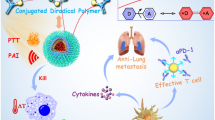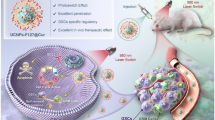Abstract
Two aza-BODIPY photosensitizes (PSs, compounds 7 and 8), featuring an iodine atom on each pyrrolic unit of their structure, were synthesized in fairly good yields starting from commercial products and tested in vitro on two human cancer cell lines (HCT116 and SKOV3) to assess their photodynamic efficacy. After treating the cell cultures with variable concentrations of 7 or 8 and incubating for the desired incubation time, the cells were irradiated for two hours with a red-light emitting diode (LED) device; afterwards the extent of cell death was determined by MTT assay. Besides the killing effect, the new PSs were also studied to determine further parameters related to photodynamic efficacy, such as the resistance towards photobleaching, the rate of singlet oxygen production, the fluorescence quantum yields, the cellular uptake and the localization inside the cells and, finally, flow cytometric analysis for apoptosis. Considering the results as a whole, these aza-BODIPYs can be considered to be promising photosensitizers because of their IC50 values being below micromolar concentrations and for more rather interesting features. Actually, these molecules have proved to be: (a) quite stable towards photobleaching; (b) good producers of singlet oxygen and (c) highly penetrating the cells with a wide distribution in the cytosol. Furthermore, in accordance with the good rate of singlet oxygen production, the apoptotic cells reach 30% and this allows us to assume a low inflammatory effect of the in vivo PDT treatment; thus a possible in vivo application of these aza-BODIPYs might be plausible.
Similar content being viewed by others
References
D. E. Dolmans, D. Fukumura and R. K. Jain, Photodynamic therapy for cancer, Nat. Rev. Cancer, 2003, 3, 380–387.
L. Cheng, C. Wang, L. Feng, K. Yang and Z. Liu, Functional nanomaterials for phototherapies of cancer, Chem. Rev., 2014, 114, 10869–10939.
G. Szakacs, J. K. Paterson, J. A. Ludwig, C. Booth-Genthe and M. M. Gottesman, Targeting multidrug resistance in cancer, Nat. Rev. Drug Discovery, 2006, 5, 219–234.
C. Bock and T. Lengauer, Managing drug resistance in cancer: lessons from HIV therapy, Nat. Rev. Cancer, 2012, 12, 494–501.
G. B. Kharkwal, S. K. Sharma, Y. Y. Huang, T. Dai and M. R. Hamblin, Photodynamic therapy for infections: clinical applications, Lasers Surg. Med., 2011, 43, 755–767.
I. J. Macdonald and T. J. Dougharty, Basic principles of photodynamic therapy, J. Porphyrins Phthalocyanines, 2001, 5, 105–129.
J. Kou, D. Dou and L. Yang, Porphyrin photosensitizers in photodynamic therapy and its applications, Oncotarget, 2017, 46, 81591–81603.
D. Kessel, Apoptosis and associated phenomena as a determinants of the efficacy of photodynamic therapy, Photochem. Photobiol. Sci., 2015, 14, 1397–1402.
M. Ochsner, Photodynamic therapy: the clinical perspective. Review on applications for control of diverse tumorous and non-tumorous diseases, Drug Res., 1997, 47, 1185–1194.
B. F. Overholt, M. Panjehpour and D. L. Halberg, Photodynamic therapy for Barrett’s esophagus with dysplasia and/or early stage carcinoma: long-term results, Gastrointest. Endos., 2003, 58, 183–188.
H. Barr, N. A. Sheperd, A. Dix, D. J. H. Roberts, W. C. Tan and N. Krasner, Eradication of high-grade dysplasia in columnar-lined (Barrett’s) oesophagus by photodynamic therapy with endogenously generated protoporphyrin IX, Lancet, 1996, 348, 584–585.
M. P. Copper, I. B. Tan, H. Oppelaar, M. C. Ruevekamp and F. A. Stewart, Meta-tetra(hydroxyphenyl)chlorin Photodynamic Therapy in Early-Stage Squamous Cell Carcinoma of the Head and Neck, Arch. Otolaryngol, 2003, 129, 709–711.
R. Baskaran, J. Lee and S. G. Yang, Clinical development of photodynamic agents and therapeutic applications, Biomater. Res., 2018, 22, 25.
E. Caruso, M. Gariboldi, A. Sangion, P. Gramatica and S. Banfi, Synthesis, photodynamic activity, and quantitative structure-activity relationship modelling of a series of BODIPYs, J. Photochem. Photobiol, B, 2017, 167, 269–281.
E. Caruso, S. Banfi, P. Barbieri, B. Leva and V. T. Orlandi, Synthesis and antibacterial activity of novel cationic BODIPY photosensitizers, J. Photochem. Photobiol., B, 2012, 114, 44–51.
S. G. Awuah and Y You, Boron dipyrromethene (BODIPY)-based photosensitizers for photodynamic therapy, RSC Adv., 2012, 2, 11169–11183.
A. Kamkaew, S. H. Lim, H. B. Lee, L. V. Kiew, L. Y. Chung and K. Burgess, BODIPY dyes in photodynamic therapy, Chem. Soc. Rev., 2013, 42, 77–88.
A. Turksoy, D. Yildiz and E. U. Akkaya, Photosensitization and controlled photosensitization with BODIPY dyes, Coord. Chem. Rev., 2019, 379, 47–64.
R. Prieto-Montero, A. Prieto-Castañeda, R. Sola-Llano, A. R. Agarrabeitia, D. García-Fresnadillo, I. López-Arbeloa, A. Villanueva, M. J. Ortiz, S. de la Moya and V. Martínez-Martínez, Exploring BODIPY derivatives as singlet oxygen photosensitizers for PDT, Photochem. Photobiol., 2020, DOI: 10.1111/php.l3232.
J. Pliquett, A. Dubois, C. Racoeur, N. Mabrouk, S. Amor, R. Lescure, A. Bettaïeb, B. Collin, C. Bernhard, F. Denat, P. S. Bellaye, C. Paul, E. Bodio and C. Goze, A promising family of fluorescent water-soluble aza-BODIPY dyes for in vivo molecular imaging, Bioconjugate Chem., 2019, 30, 1061–1066.
Y. Tanga, L. Xuea, Q. Yua, D. Chena, Z. Cheng, W. Wangb, J. Shaoa and X. Dong, Smart Aza-BODIPY photosensitizer for tumor microenvironment-enhanced cancer phototherapy, ACS Appl. Bio Mater., 2019, 12, 5888–5897.
M. A. T. Rogers, 2:4-Diarylpyrroles. Part I. Synthesis of 2:4-diarylpyrroles and 2:2′:4:4′-tetra-arylazadipyrromethines, J. Chem. Soc., 1943, 590–596.
W. H. Davies and M. A. T. Rogers, 2:4-Diarylpyrroles. Part IV. The formation of acylated 5-amino-2:4-diphenylpyrroles from β-benzoly-ᾳ-phenylpropionitrile and some notes on the Leuckart reaction, J. Chem. Soc., 1944, 126–131.
T. H. Allik, R. E. Hermes, G. Sathyamoorthi and J. H. Boyer, Proc. SPIE-Int. Soc. Opt. Eng., 1994, 240–248.
Y. Ge and D. F. O’Shea, Azadipyrromethenes: from traditional dye chemistry to leading edge applications, Chem. Soc. Rev., 2016, 45, 3846–3864.
C. A. Parker and W. T. Rees, Correction of fluorescence spectra and measurement of fluorescence quantum efficiency, Analyst, 1960, 85, 587–600.
I. E. Kochevar and R. W. Redmond, Photosensitized production of singlet oxygen, Methods Enzymol., 2000, 319, 20–28.
M. C. Malacarne, S. Banfi, A. S. Alberton and E. Caruso, Photodynamic activity of new photosensitizers obtained from 5,10,15,20-tetrapentafluorophenylporphyrin, J. Porphyrins Phthalocyanines, 2019, 23, 1–10.
M. C. Alley, D. A. Scudiero, A. Monks, M. L. Hursey, M. J. Czerwinski, D. L. Fine, B. J. Abbott, J. G. Mayo, R. H. Shoemaker and M. R. Boyd, Feasibility of drug screening with panels of human tumor cell lines using a micro-culture tetrazolium assay, Cancer Res., 1988, 48, 589–601.
S. Wattanasin and W. S. Murphy, An Improved Procedure for the Preparation of Chalcones and Related Enones, Synthesis, 1980, 647–650.
A. Gorman, J. Killoran, C. O’Shea, T. Kenna, W. M. Gallagher and D. F. O’Shea, In Vitro Demonstration of the Heavy-Atom Effect for Photodynamic Therapy, J. Am. Chem. Soc., 2004, 126, 10619–10631.
S. Banfi, E. Caruso, S. Zaza, M. Mancini, M. B. Gariboldi and E. Monti, Synthesis and photodynamic activity of a panel of BODIPY dyes, J. Photochem. Photobiol., B, 2012, 114, 52–60.
Y. Xu, M. Zhao, L. Zou, L. Wu, M. Xie, T. Yang, S. Liu, W. Huang and Q. Zhao, Highly stable and multifunctional Aza-BODIPY-based phototherapeutic agent for anticancer treatment, ACS Appl. Mater. Interfaces, 2018, 10, 44324–44335.
N. Adarsh, R. R. Avirah and D. Ramaiah, Tuning photosensitized singlet oxygen generation efficiency of novel Aza-BODIPY dyes, Org. Lett., 2010, 12, 5720–5723.
G. Jori, Tumour photosensitizers: approaches to enhance the selectivity and efficiency of photodynamic therapy, J. Photochem. Photobiol., B, 1996, 36, 87–93.
A. Ormond and H. Freeman, Dye sensitizers for photodynamic therapy, Materials, 2013, 6, 817–840.
S. Banfi, G. Nasini, S. Zaza and E. Caruso, Synthesis and Photo-Physical properties of a series of BODIPY dyes, Tetrahedron, 2013, 69, 4845–4856.
R. Bonnett and G. Martinez, Photobleaching of sensitisers used in photodynamic therapy, Tetrahedron, 2001, 57, 9513–9547.
I. Georgakoudi and T. H. Foster, Singlet oxygen-versus non-singlet oxygen-mediated mechanism of sensitizer photobleaching and their effects on photodynamic dosimetry, Photochem. Photobiol, 1998, 67, 612–625.
E. Caruso, M. C. Malacarne, S. Banfi, M. B. Gariboldi and V. T. Orlandi, Cationic diarylporphyrins: in vitro versatile anticancer and antibacterial photosensitizers, J. Photochem. Photobiol., B, 2019, 197, 111548.
M. Lualdi, E. Pedrini, K. Rea, L. Monti, D. Scaldaferri, M. Gariboldi, A. Camporeale, P. Ghia, E. Monti, A. Tomassetti, F. Acquati and R. Taramelli, Pleiotropic modes of action in tumor cells of RNASET2, an evolutionary highly conserved extracellular RNase, Oncotarget, 2015, 6, 7851–7865.
European Bioinformatics Institute http://www.EBI.ac.uk; Expression Atlas. In silico RNASET2 gene comparison expression between HCT-116 cell line and SKOV-3 cell line.
G. Qian, L. Wang, X. Zheng and T. Yu, Deactivation of cisplatin-resistant human lung/ovary cancer cells with pyropheophorbide-ᾳ methyl ester-photodynamic therapy, Cancer Biol. Ther., 2017, 18, 984–989; S. Nagata, Apoptosis by death factor, Cell, 1997, 88, 335–365.
M. A. Doustvandi, F. Mohammadnejad, B. Mansoori, A. Mohammadi, F. Navaejpour, B. Baradaran and H. Tajalli, The interaction between the light source dose and caspase-dependent and –independent apoptosis in human SK-MEL-3 skin cancer cells following photodynamic therapy with phthalocyanines: a comparable study, J. Photochem. Photobiol, B, 2017, 176, 62–68.
J. Osterloh and M. G. H. Vicente, Mechanisms of porphyrinoid localization in tumors, J. Porphyrins Phthalocyanines, 2002, 6, 305–324.
Author information
Authors and Affiliations
Corresponding author
Additional information
PhD student of the “Life Science and Biotechnology” course at University of Insubria.
Rights and permissions
About this article
Cite this article
Malacarne, M.C., Banfi, S. & Caruso, E. In vitro photodynamic treatment of cancer cells induced by aza-BODIPYs. Photochem Photobiol Sci 19, 790–799 (2020). https://doi.org/10.1039/d0pp00026d
Received:
Accepted:
Published:
Issue Date:
DOI: https://doi.org/10.1039/d0pp00026d




